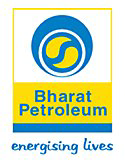Company Analysis Petronet LNG Limited
1. Summary
Advantages
- Price (296.05 ₹) is less than fair price (297.91 ₹)
- Dividends (2.99%) are higher than the sector average (2.52%).
- The stock's return over the last year (12.1%) is higher than the sector average (-25.96%).
- The company's current efficiency (ROE=22.36%) is higher than the sector average (ROE=19.86%)
Disadvantages
- Current debt level 11.79% has increased over 5 years from 4.81%.
Similar companies
2. Share price and performance
2.1. Share price
2.2. News
2.3. Market efficiency
| Petronet LNG Limited | Energy | Index | |
|---|---|---|---|
| 7 days | -0.8% | -19.5% | 0.7% |
| 90 days | -14.4% | -29% | -1.6% |
| 1 year | 12.1% | -26% | 6.1% |
PETRONET vs Sector: Petronet LNG Limited has outperformed the "Energy" sector by 38.06% over the past year.
PETRONET vs Market: Petronet LNG Limited has outperformed the market by 6.05% over the past year.
Stable price: PETRONET is not significantly more volatile than the rest of the market on "National Stock Exchange Of India" over the last 3 months, with typical variations of +/- 5% per week.
Long period: PETRONET with weekly volatility of 0.2327% over the past year.
3. Summary of the report
4. Fundamental Analysis
4.1. Stock price and price forecast
Below fair price: The current price (296.05 ₹) is lower than the fair price (297.91 ₹).
Price not significantly lower than the fair price: The current price (296.05 ₹) is slightly lower than the fair price by 0.6%.
4.2. P/E
P/E vs Sector: The company's P/E (10.65) is lower than that of the sector as a whole (54.88).
P/E vs Market: The company's P/E (10.65) is lower than that of the market as a whole (64.66).
4.2.1 P/E Similar companies
4.3. P/BV
P/BV vs Sector: The company's P/BV (2.23) is lower than that of the sector as a whole (2.63).
P/BV vs Market: The company's P/BV (2.23) is lower than that of the market as a whole (6.37).
4.3.1 P/BV Similar companies
4.4. P/S
P/S vs Sector: The company's P/S indicator (0.7378) is lower than that of the sector as a whole (1.83).
P/S vs Market: The company's P/S indicator (0.7378) is lower than that of the market as a whole (18.79).
4.4.1 P/S Similar companies
4.5. EV/Ebitda
EV/Ebitda vs Sector: The company's EV/Ebitda (6.91) is lower than that of the sector as a whole (11.28).
EV/Ebitda vs Market: The company's EV/Ebitda (6.91) is lower than that of the market as a whole (34.44).
5. Profitability
5.1. Profitability and revenue
5.2. Earnings per share - EPS
5.3. Past profitability Net Income
Yield Trend: Rising and has grown by 7.02% over the last 5 years.
Earnings Slowdown: The last year's return (0%) is below the 5-year average return (7.02%).
Profitability vs Sector: The return for the last year (0%) exceeds the return for the sector (-8.97%).
5.4. ROE
ROE vs Sector: The company's ROE (22.36%) is higher than that of the sector as a whole (19.86%).
ROE vs Market: The company's ROE (22.36%) is higher than that of the market as a whole (3.6%).
5.5. ROA
ROA vs Sector: The company's ROA (15.13%) is higher than that of the sector as a whole (10.02%).
ROA vs Market: The company's ROA (15.13%) is higher than that of the market as a whole (7.92%).
5.6. ROIC
ROIC vs Sector: The company's ROIC (25.93%) is higher than that of the sector as a whole (17.84%).
ROIC vs Market: The company's ROIC (25.93%) is higher than that of the market as a whole (15.54%).
7. Dividends
7.1. Dividend yield vs Market
High yield: The dividend yield of the company 2.99% is higher than the average for the sector '2.52%.
7.2. Stability and increase in payments
Dividend stability: The company's dividend yield 2.99% has been steadily paid over the past 7 years, DSI=0.86.
Weak dividend growth: The company's dividend yield 2.99% has been growing weakly or stagnant over the past 5 years. Growth over only 0 years.
7.3. Payout percentage
Dividend Coverage: Current payments from income (41.07%) are at a comfortable level.
Pay for your subscription
More functionality and data for company and portfolio analysis is available by subscription




